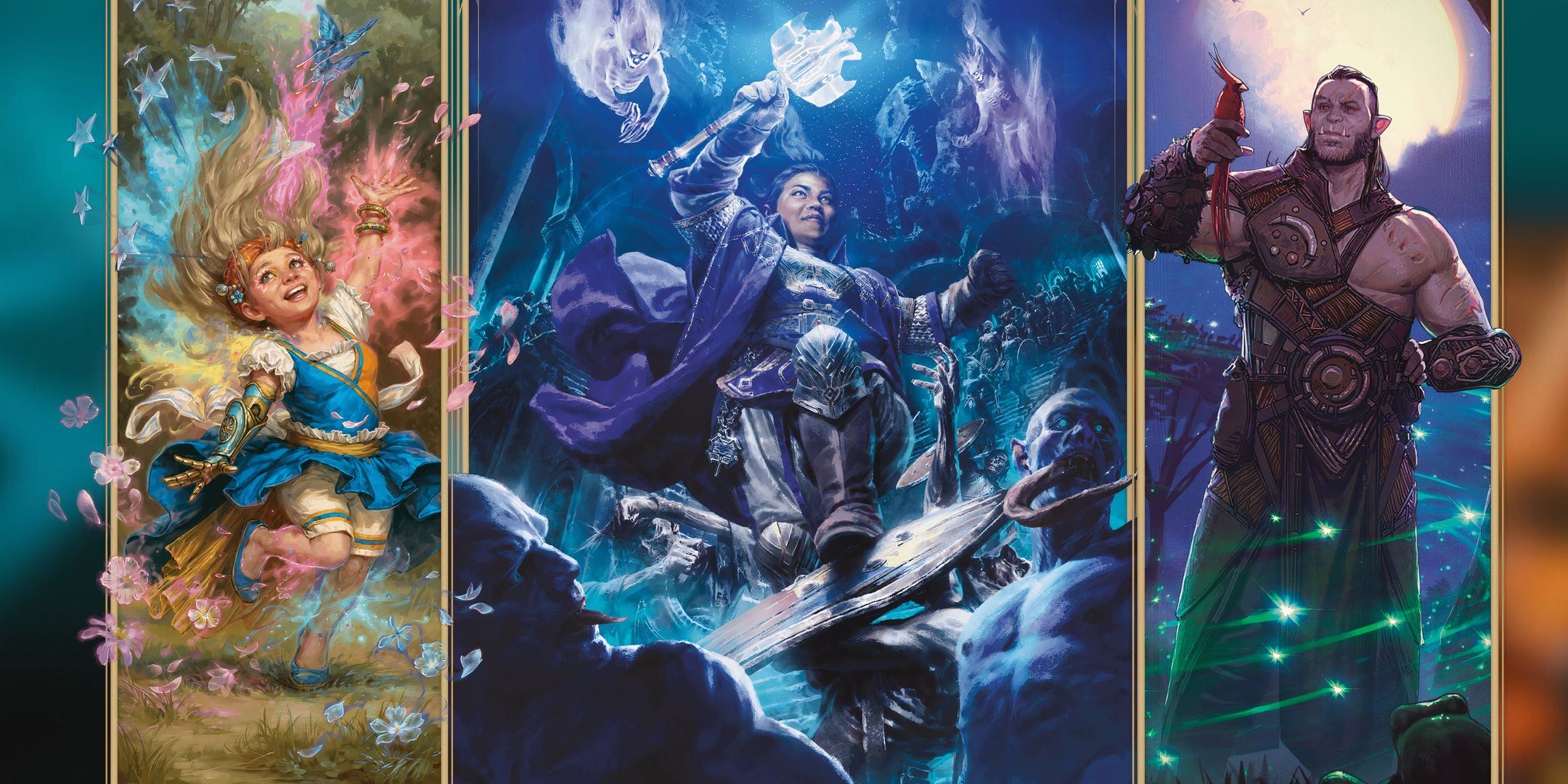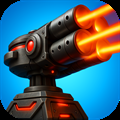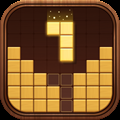Dungeons & Dragons: Best Classes For Beginning Players, Ranked

Summary
- The gunslinger and artificer classes in D&D are challenging for beginners due to resource management complexities.
- Bloodhunter offers a balance between spells and physical combat, making it a good option for those curious about spellcasting.
- Warlocks are a beginner-friendly spellcasting class in D&D due to fewer spells and faster regeneration, but can prove complex due to their Eldritch Invocations.
It's probably easier than ever for gaming enthusiasts to get into Dungeons & Dragons. With the popularity of actual play podcasts and video series like Critical Role and Dimension 20, a new generation of gamers has been inspired to join the ranks of D&D devotees. Part of the draw is the choice of D&D classes that let players customize and role-play their own individual characters.
RelatedDungeons & Dragons: Best Background For Each Class In The 2024 Player's Handbook
All adventurers came from somewhere.
Posts 1Much of the gameplay variation in D&D comes from which character class people use, as they give players access to abilities, spells, and perks. However, not all classes are created equal for brand-new players. Which are the best D&D classes for beginners?
Updated February 19, 2025 by Jack Filsinger: Choosing your very first class in Dungeons & Dragons can prove challenging if you don't know where to start. That's why we've updated this list to include more options, as well as added new information on key features and party roles for each class, so you have everything you need to select the best DND class as a beginner.
15 Gunslinger
Firearm by Chris SeamanComplexity Rating
High.
Key Features
Proficiency with firearms and Tinker's Tools.
Party Role
Ranged damage.
Technically speaking, gunslinger is a subclass of fighter but is often treated as its own class at some tables. Rules can vary depending on which version of this class you'd like to use, but generally speaking, this class is fun and relatively straightforward.
This class can be tricky in terms of resource management. Because you have to often repair firearms, maintain weapons, and track Grit points, there's a lot to keep in your head at one time. Sure, there's no spellcasting or anything like that, but overall, this subclass is more complex than most.
14 Artificer
Gnome Artificer Vi via Wizards of the CoastComplexity Rating
High.
Key Features
Spellcasting and Magical Tinkering, allowing players to create magical objects.
Party Role
Support and damage hybrid.
Artificers are not in the main Handbook - Instead, you'll find them in Tasha's Cauldron of Everything. Their idea is to be a scientist-like figure, quantifying magic and using it in unique ways, as well as creating special equipment for yourself or your friends.
However, to pull that off properly, you must be familiar with how the game works. Otherwise, you may feel lost when creating your items, unsure which of them will be helpful to you and even more so for your friends, as you'll also have to understand their character to build them special items.
13 Bloodhunter
Blood Hunter by Joma CuetoComplexity Rating
High.
Key Features
Blood Maledicts, and access to Fighting Styles.
Party Role
Tank.
Bloodhunter is not one of the classes that you will find in either the 2014 or 2024 Player's Handbooks. It was instead created by Matthew Mercer of voice acting and Critical Role fame. Although not in the Player's Handbook, the Bloodhunter has been made an official class option and can be used in creator creation with D&D Beyond.
RelatedDungeons & Dragons: All Official Wizard Subclasses, Ranked
Wizards are the best class in Dungeons & Dragons if you want to control the powers of magic and shape the universe around you, but not all are equal.
PostsIn comparison to the other martial classes, Bloodhunters are a bit more complex thanks to their Blood Maledict and access to spells. However, when compared to classes that focus primarily on spellcasting, magic isn't your only trick, as you will typically have more hit points and more options if you find yourself in a position where you can't safely cast. This is a good option for those curious about spellcasting but not ready to do the deep dive into being a wizard or the like.
12 Warlock
A Draconic Warlock by Ignatius BudiComplexity Rating
High.
Key Features
Eldritch Invocations, which allow players to customize their spellcasting.
Party Role
Damage or support depending on subclass selection.
Warlocks are the best spellcasting D&D class for beginners. They have access to many fewer spells and have fewer spell slots than the other magical classes. However, those spells hit harder and regenerate faster. Warlocks regain their spell slots on a short rest as opposed to a long one.
In addition, they take a lot of advantage from their cantrips, which have no casting limit. However, what can make them complicated is their Eldritch Invocations, giving them unique perks or even allowing them to use low-level spells without spending spell slots. Tracking these abilities and managing refueling spell slots can prove tricky to track at times.
11 Wizard
A Scholarly Magic-User by Billy ChristianComplexity Rating
High.
Key Features
Diverse spellcasting and Arcane Recovery.
Party Role
Damage and support hybrid.
Wizards attract a lot of attention to themselves when newcomers see their options. Among the spellcasters, they offer the widest variety with their spells, and in terms of raw power and overall potential, wizards are one of the most powerful classes in the game. However, that immense variety in builds and spells makes them a complicated choice for new players.
Wizard is the type of class that, if you want to do it efficiently, you need to map out what you'll get in future levels. There's a lot to consider, between which types of spells you'll want and what subclass will be best for those spells.
10 Cleric
Priest by Michael Broussard.Complexity Rating
Average.
Key Features
Most healing spells and features in the game.
Party Role
Support.
Clerics are one of the most popular support options, being exceptional healers, although they can also be formidable combatants, depending on how you want to build them. Still, being a support in a game that you're still trying to get familiar with is complicated, mainly because your lack of understanding of the game can also compromise the rest of the group.
RelatedDungeons & Dragons: All Official Paladin Subclasses, Ranked
Here are all the official paladin oaths available in Dungeons & Dragons Fifth Edition, ranked.
PostsStill, they are a fun option, being a class that can fight with weapons and magic - they're not the only class that does so, but they're a fun option in this regard. If you're new to roleplay, there's also some added complexity that comes with playing a cleric in terms of picking a deity from the pantheon to worship.
9 Bard
Bard by Evyn FongComplexity Rating
Average.
Key Features
Bardic Inspiration, allowing players to buff their allies.
Party Role
Support and damage hybrid.
Bards tend to fill something of a support role in combat, particularly with their Bardic Inspiration ability. They're also full casters with access to cantrips and various spells. Unlike clerics and druids, they only know a certain amount of chosen spells at any given time, meaning their spellcasting is a little easier to manage.
Plus, bards possess not-so-insignificant physical combat skills and thus have much to offer a player. However, it can also be difficult to keep so many abilities straight, let alone leverage them optimally. Lastly, they are notorious for being amazing options for social interactions due to their Charisma, which is challenging to pull off if you're new to the game or improv scenarios in general.
8 Monk
A Martial Artist by Joshua RaphaelComplexity Rating
Average.
Key Features
Ki points, granting players access to extra attacks and movement.
Party Role
Melee combatant.
Truth be told, Monks are not particularly difficult to play with. However, they're also not the most optimized class in the game. They are powerful, but that relies on being clever with particular species or feat picks and being familiar with your strengths. After all, their damage output isn't the best, and they're a bit fragile.
All that said, because monks have a pretty standard level progression and don't typically have spells, this class can prove easier than most. The real trick to this class is managing their Ki points, but once you've got that down, monks are relatively straightforward.
7 Druid
A Druid by Alexander MokhovComplexity Rating
Average.
Key Features
Wildshape, allowing players to transform into different animals.
Party Role
Damage, with some minor support elements.
Druids are not difficult, but understanding the game goes a long way toward optimizing your play in this class. Their most famous mechanic is their power to transform into animals, and many of them have official stats, from cats to octopuses or bears. Knowing your options beforehand is nice, but it requires game knowledge or lots of reading.
RelatedDungeons & Dragons: All Official Rogue Subclasses, Ranked
Players can choose between several main rogue archetypes with varying abilities and traits. However, not all subclasses are made equal.
PostsStill, this is a class where it's very difficult to do wrong. Known as one of the most overpowered classes in the game, they can fit any role, causing lots of damage, tanking, or healing. Because you can tweak your spell list, you can also flavor your druid to prioritize healing or damage depending on the situation your party is in.
6 Paladin
A Devout Warrior by Michael BroussardComplexity Rating
Average.
Key Features
Smite, allowing players to empower their attacks with radiant damage.
Party Role
Support and Tank hybrid.
Paladins are a solid choice for those unfamiliar with the magic system. They can use magic, but paladins are powerhouses without it, too, since you can choose to use your spell points to use Smite, which increases the damage of your attack, instead of using them to cast spells.
They can also wield any weapon properly, making them highly versatile as either a strong damage dealer or an effective tank. Lastly, paladins have auras, which give them - and their allies - all sorts of passive bonuses, so you'll help your group simply by being near them.













